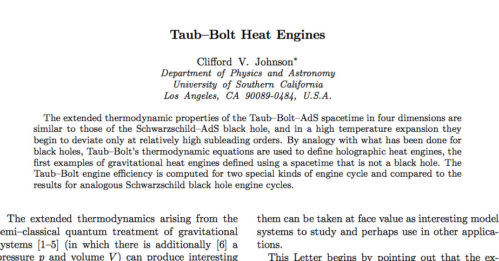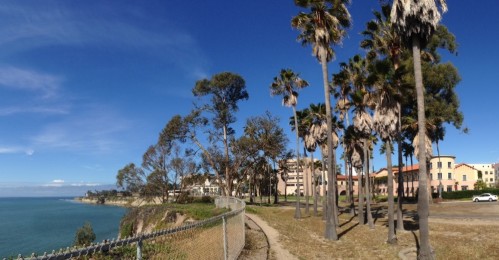News from the Front, XVII: Super-Entropic Instability
 I’m quite excited because of some new results I got recently, which appeared on the ArXiv today. I’ve found a new (and I think, possibly important) instability in quantum gravity.
I’m quite excited because of some new results I got recently, which appeared on the ArXiv today. I’ve found a new (and I think, possibly important) instability in quantum gravity.
Said more carefully, I’ve found a sibling to Hawking’s celebrated instability that manifests itself as black hole evaporation. This new instability also results in evaporation, driven by Hawking radiation, and it can appear for black holes that might not seem unstable to evaporation in ordinary circumstances (i.e., there’s no Hawking channel to decay), but turn out to be unstable upon closer examination, in a larger context. That context is the extended gravitational thermodynamics you’ve read me talking about here in several previous posts (see e.g. here and here). In that framework, the cosmological constant is dynamical and enters the thermodynamics as a pressure variable, p. It has a conjugate, V, which is a quantity that can be derived once you know the pressure and the mass of the black hole.
Well, Hawking evaporation is a catastrophic quantum phenomenon that follows from the fact that the radiation temperature of a Schwarzschild black hole (the simplest one you can think of) goes inversely with the mass. So the black hole radiates and loses energy, reducing its mass. But that means that it will radiate at even higher temperature, driving its mass down even more. So it will radiate even more, and so on. So it is an instability in the sense that the system drives itself even further away from where it started at every moment. Like a pencil falling over from balancing on a point.
This is the original quantum instability for gravitational systems. It’s, as you probably know, very important. (Although in our universe, the temperature of radiation is so tiny for astrophysical black holes (they have large mass) that the effect is washed out by the local temperature of the universe… But if the univverse ever had microscopic black holes, they’d have radiated in this way…)
So very nice, so very 1970s. What have I found recently?
A nice way of expressing the above instability is to simply say […] Click to continue reading this post




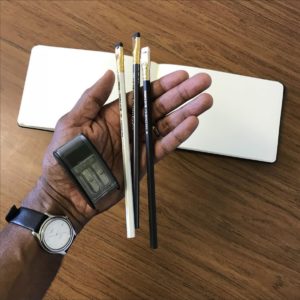
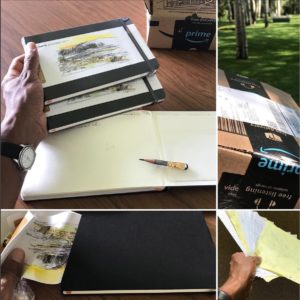
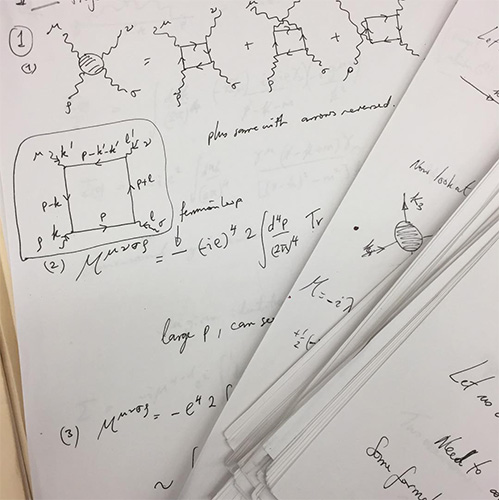 Back where? In front of a classroom teaching quantum field theory, that is. It is a wonderful, fascinating, and super-important subject, and it has been a while since I’ve taught it. I actually managed to dig out some pretty good notes for the last time I taught it. (Thank you, my inner pack rat for keeping those notes and putting them where I could find them!) They’ll be a helpful foundation. (Aren’t they beautiful by the way? Those squiggly diagrams are called Feynman diagrams.)
Back where? In front of a classroom teaching quantum field theory, that is. It is a wonderful, fascinating, and super-important subject, and it has been a while since I’ve taught it. I actually managed to dig out some pretty good notes for the last time I taught it. (Thank you, my inner pack rat for keeping those notes and putting them where I could find them!) They’ll be a helpful foundation. (Aren’t they beautiful by the way? Those squiggly diagrams are called Feynman diagrams.)
